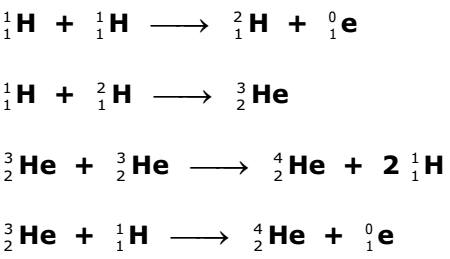Written by J.A Dobado | Last Updated on April 22, 2024
Fusion is the process by which two light nuclei join together to form a single daughter nucleus. Nuclear fusion, like fission, generates large amounts of energy, but has in its favor the fact that its products are not radioactive. A typical nuclear fusion reaction occurs in the Sun.

Fusion reactions occur in the Sun. The collision reactions of two hydrogen isotopes (deuterium and tritium) generating helium with positron release are shown below.
It is thought that fusion could be a promising source of energy because of the availability of light isotopes and because the process does not eliminate radioactive waste, i.e., it does not pose a threat to the environment. However, fusion is not currently used to generate energy, due to its unfeasibility, because it is currently impossible to achieve the required temperatures at the nuclear reactor level.
The greatest difficulty in building a fusion reactor lies precisely in the construction of the reactor, no material can withstand such high temperatures. To solve this problem it has been proposed to generate the necessary temperature and transform the reactants into plasma by keeping them rotating inside a vacuum reactor confined with rotating magnetic and electric fields.
In the case of being able to build this type of reactor, the material to be fused would be deuterium, given that there is a lot of water on the planet, the available amount of deuterium is close to 5 x 1015 tons. Each fusion reaction releases 6.3 x 10-13 J or 3.8 x 1011 J for every 4 grams of deuterium used.